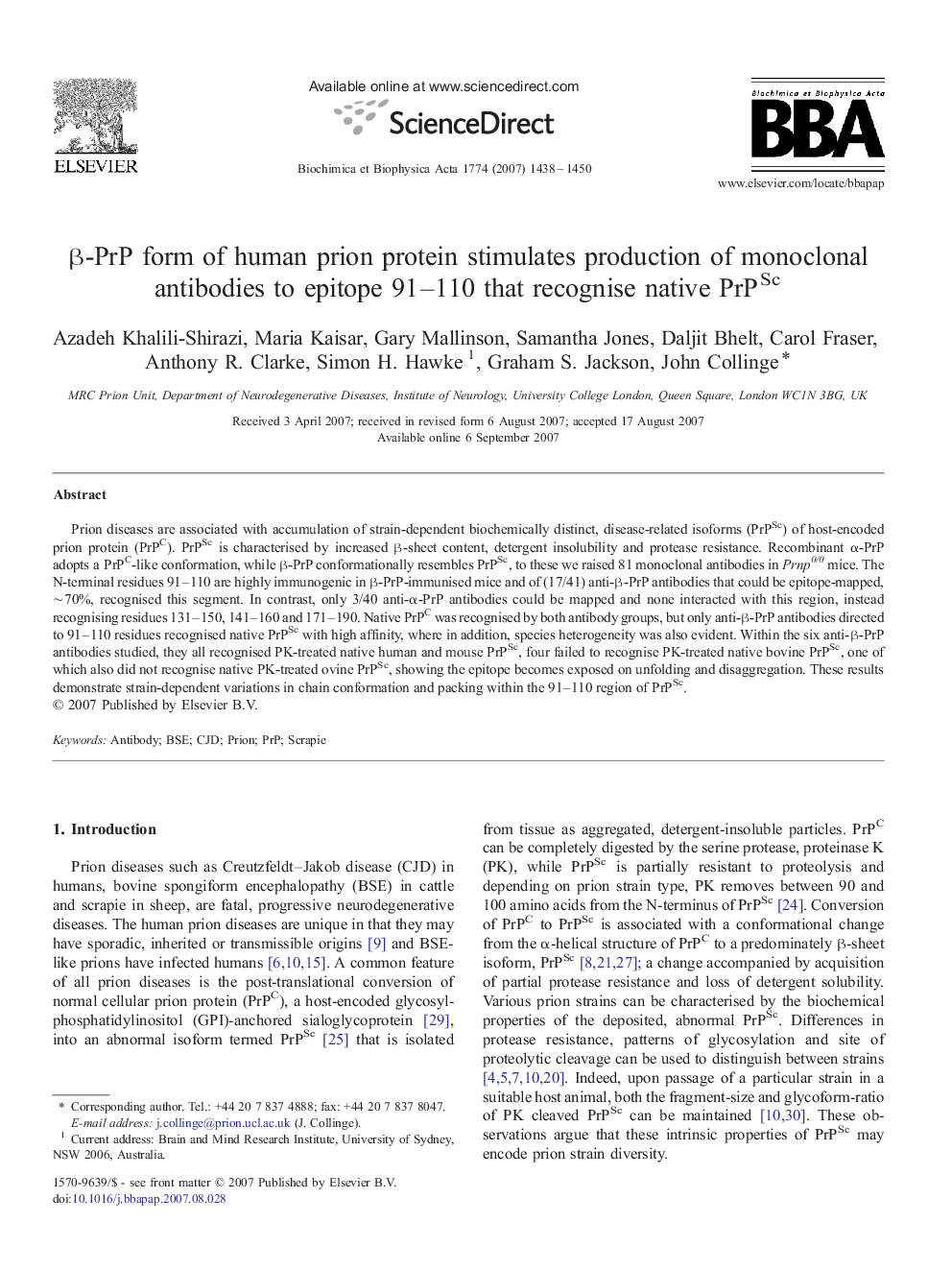| Article ID | Journal | Published Year | Pages | File Type |
|---|---|---|---|---|
| 1180696 | Biochimica et Biophysica Acta (BBA) - Proteins and Proteomics | 2007 | 13 Pages |
Prion diseases are associated with accumulation of strain-dependent biochemically distinct, disease-related isoforms (PrPSc) of host-encoded prion protein (PrPC). PrPSc is characterised by increased β-sheet content, detergent insolubility and protease resistance. Recombinant α-PrP adopts a PrPC-like conformation, while β-PrP conformationally resembles PrPSc, to these we raised 81 monoclonal antibodies in Prnp0/0 mice. The N-terminal residues 91–110 are highly immunogenic in β-PrP-immunised mice and of (17/41) anti-β-PrP antibodies that could be epitope-mapped, ∼ 70%, recognised this segment. In contrast, only 3/40 anti-α-PrP antibodies could be mapped and none interacted with this region, instead recognising residues 131–150, 141–160 and 171–190. Native PrPC was recognised by both antibody groups, but only anti-β-PrP antibodies directed to 91–110 residues recognised native PrPSc with high affinity, where in addition, species heterogeneity was also evident. Within the six anti-β-PrP antibodies studied, they all recognised PK-treated native human and mouse PrPSc, four failed to recognise PK-treated native bovine PrPSc, one of which also did not recognise native PK-treated ovine PrPSc, showing the epitope becomes exposed on unfolding and disaggregation. These results demonstrate strain-dependent variations in chain conformation and packing within the 91–110 region of PrPSc.
